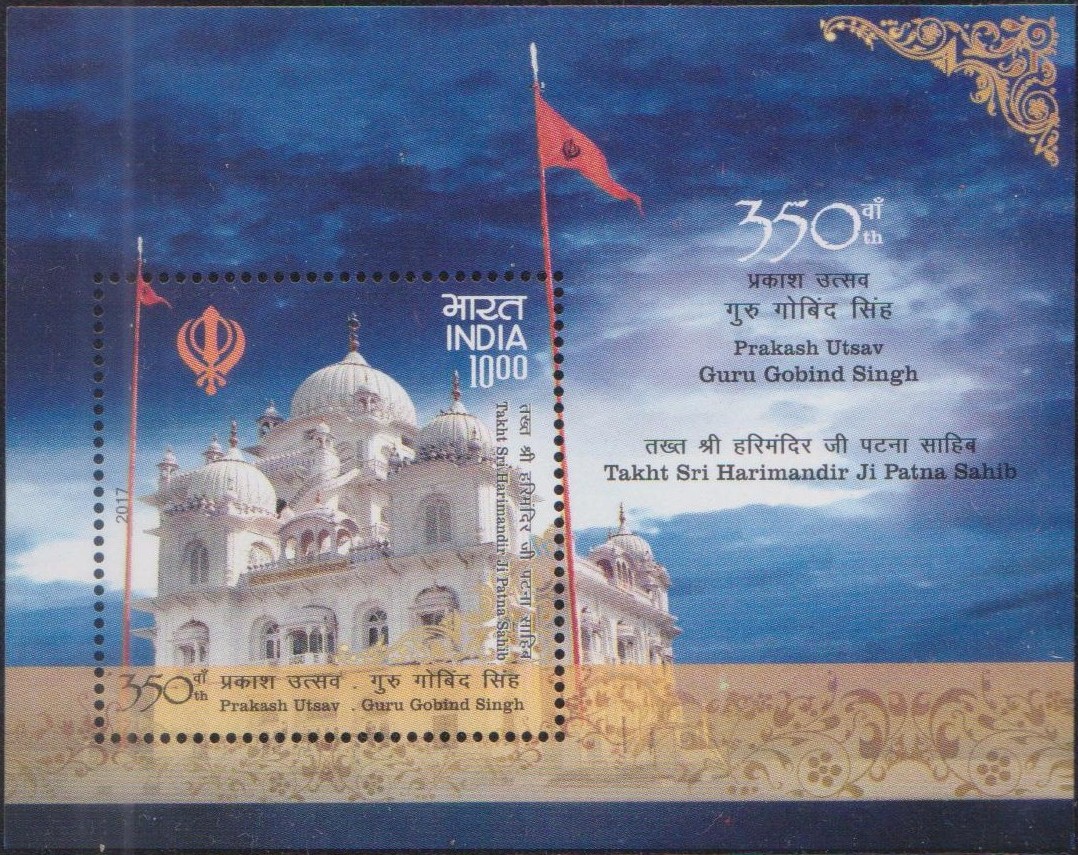
Prakash Utsav : Guru Gobind Singh
A commemorative postage stamp on the 350th Prakash Parv, birth anniversary of Guru Gobind Singh Ji, 10th Sikh Guru :
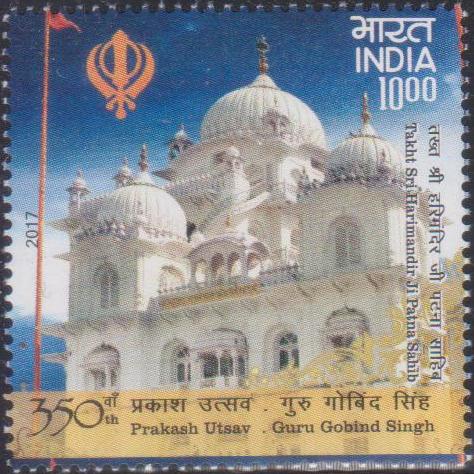
 Issued by India
Issued by India
Issued on Jan 5, 2017
Issued for : Department of Posts is pleased to release a Commemorative Postage Stamp on 350th Prakash Utsav of Guru Gobind Singh.
Credits :
Stamp / Miniature Sheet / FDC / Brochure / Cancellation Cachet : Sh. Kamleshwar Singh
Type : Stamp, Mint Condition
Colour : Multi Colour
Denomination : 1000 Paise
Stamps Printed : 301590
Miniature Sheet Printed : 0.1 million
Printing Process : Wet Offset
Printer : Security Printing Press, Hyderabad
About :
- Guru Gobind Singh was born on 22nd December 1666 at Patna, in Bihar. His father, Guru Tegh Bahadur, the Ninth Guru, was then travelling across Bengal and Assam. Returning to Patna in 1670, he directed his family to return to the Punjab. On the site of the house at Patna in which Gobind Rai was born and where he spent his early childhood now stands a sacred shrine, Takht Sri Harimandar Sahibji, one of the five most honoured seats of religious authority for the Sikhs. Gobind Rai was escorted to Anandpur on the foothills of the Sivaliks where he reached in March 1672 and where his early education included reading and writing of Punjabi, Braj, Sanskrit and Persian. After the martyrdom of ninth Guru, Guru Tegh Bahadur (his father) he was formally installed as tenth Guru on the Baisakhi day of 29th March 1676.
- Guru Gobind Singh Ji infused the spirit of both sainthood and soldier in the minds and hearts of his followers to fight oppression in order to restore justice, peace, righteousness (Dharma) and to uplift the down-trodden people in this world. Guru Gobind Singh created the Panj Pyare and became the first to request initiation by them into the Khalsa. The creation of the Khalsa created a sense of unity among the Sikhs and their supporters. He preached the worship of the One Supreme Being.
- In the midst of his engagement with the concerns of the community, he gave attention to the mastery of physical skills and literary accomplishment. He had a natural genius for poetic composition and his early years were assiduously given to this pursuit. The Var Sri Bhagauti Ji Ki, popularly called Chandi di Var, written in 1684, was his first composition and his only major work in the Punjabi language. The poem depicted the legendary contest between the gods and the demons as described in the Markandeya Purana. The choice of a warlike theme for this and a number of his later compositions such as the two Chandi Charitras, mostly in Braj, was made to infuse martial spirit among his followers to prepare them to stand up against injustice and tyranny. For him poetry was a means of revealing the divine principle and concretizing a personal vision of the Supreme Being that had been vouchsafed to him. Through his poetry he preached love and equality and a strictly ethical and moral code of conduct.
- Guru Gobind Singh named Guru Granth Sahib, the religious text of the Khalsas and the Sikhs, as the next Guru. He left his bodily form on October 7 in 1708, as he was attacked during his sleep at Nanded.
- His teachings are very simple to understand and most suitable for all times. His teachings inspire millions of his followers to strive thousands high values of humanity and brotherhood.
- Text : Based on the material available on internet.


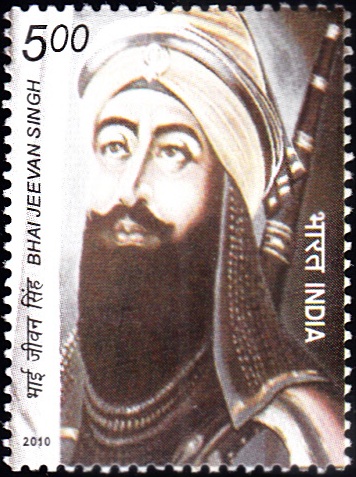

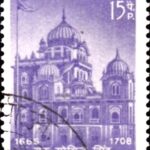
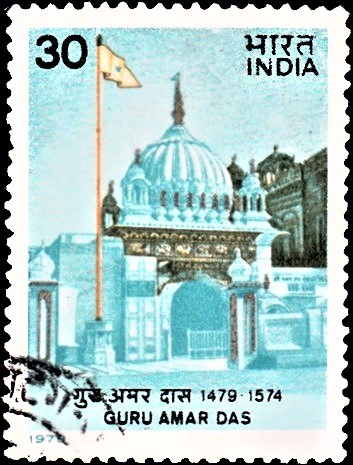
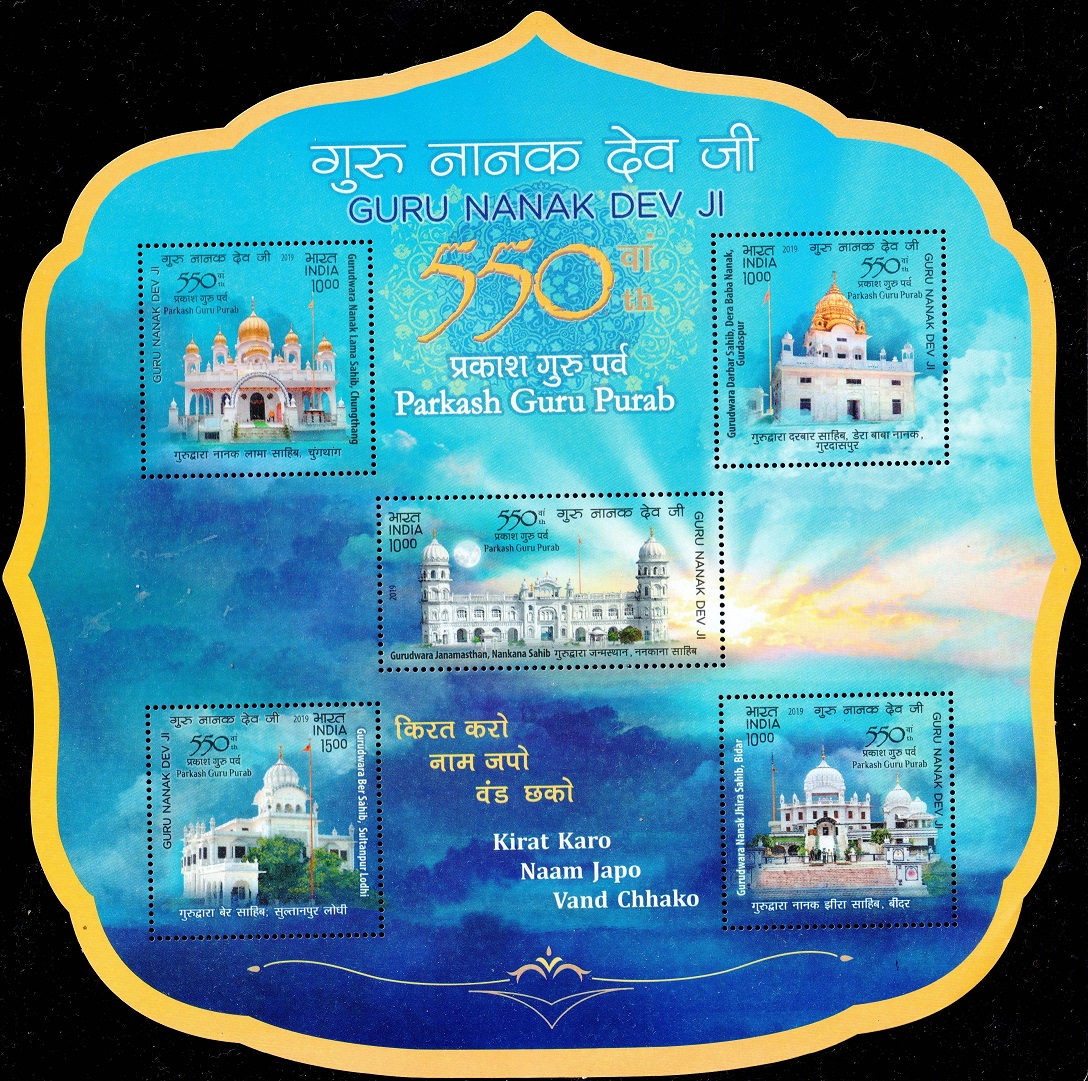
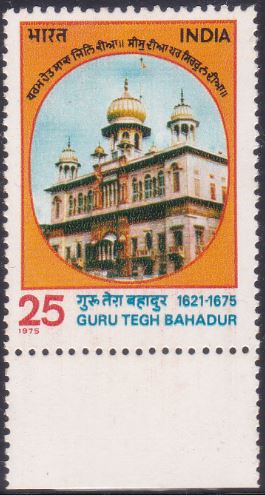
[…] Devji and son of Guru Hargobind Ji (Sixth Guru and founder of Sri Akal Takht and grandfather of Guru Gobind Singh Ji). Considered as a principled and fearless warrior, Guru ji was a learned spiritual scholar and a […]